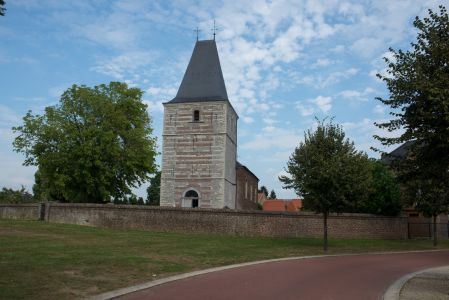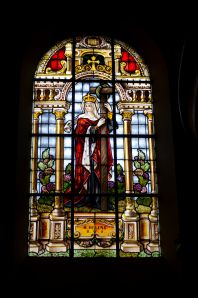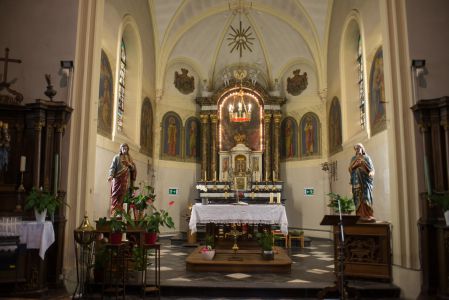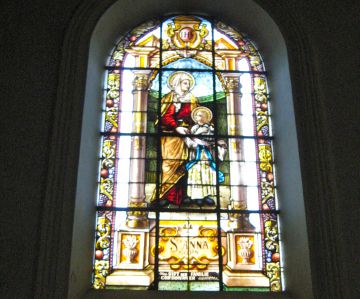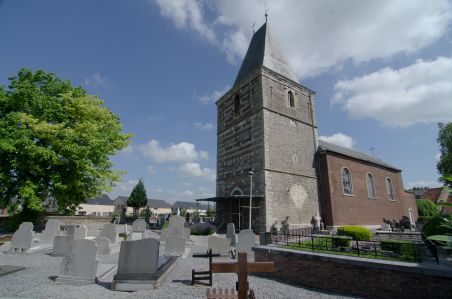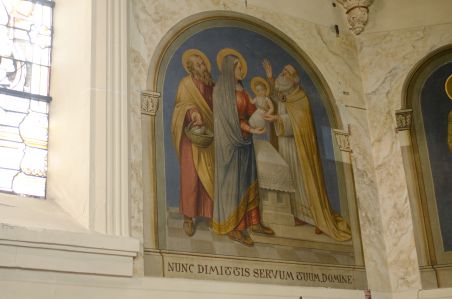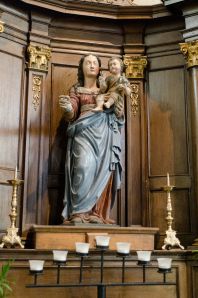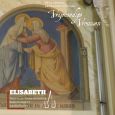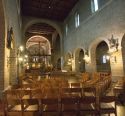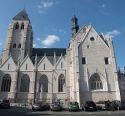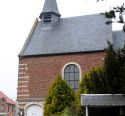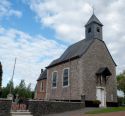Church | 1150-1858 | Romanesque, Neoclassical | Catholic Church


Map
Opening hours
01 April - 30 September
Mon -
Tue -
Wed -
Thu -
Fri -
Sat 14.00 - 18.00
Sun 14.00 - 18.00
Church closed for restoration work in 2025.
Guided tour
Free guided tours : +32 496 61 55 64
Religious offices
Description
This beautiful church, surrounded by a cemetery, can be found in the vivid village centre of Wilderen (that also has a brewery-distillery and a cycling route through the fruit region). The rectangular Romanesque tower supposedly dates back to 1150. This (defensive) western tower has an exceptional narrow hipped gable roof with on top two crosses.
Dark quartzite blocks (from Tienen) were used alternately with light Gobertange stones, a typical construction technique from Brabant. This reveals that Wilderen is located on the borders of the traditional conventions of Brabant and Southern Limburg.
In 1858, the small Romanesque nave was replaced by a neoclassic church hall in brick. The stained glass windows display a rich iconography and were donated by local families between 1909 (the choir) and 1925 (nave).
The painting “Our Lady Assumption” (Onze-Lieve-Vrouw Ten Hemelopneming) on the main altar refers to the old former name of the church.
The furniture consists of several statues, including a statue of Our Lady with Child made from polychromed wood (early seventeenth century), one of Saint Sebastian (seventeenth century) and one of Saint Roch made from polychromed wood (second half of the seventeenth century). The two side altars are from the first half of the eighteenth century. There are also two confessionals, a choir lectern (eighteenth century) and a prayer bench (mid-eighteenth century) that are worth a visit.
There are several old gravestones on the cemetery (dating from the sixteenth to the eighteenth century). Look out for the tomb of the noble family d’Oultremont and the graves of those from the castle Duras. The castle village Duras had no church so the dead were buried on the cemetery of Wilderen.
KIKIRPA : Photo-library online
See the treasures on this church online on erfgoedplus.be



